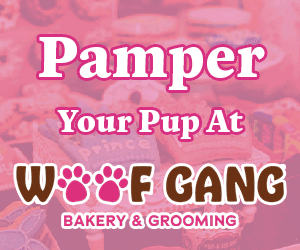The hardest behavior to teach a dog, in my opinion, is loose leash walking. Many people start at the end of the behavior, which is holding the leash at its handle and not using two hands to guide the dog on their journey. I see many allowing the dog to switch sides which can cause humans to trip up. I also see dogs suddenly jerk their handlers to go sniff, or to lunge at other dogs, sometimes in a friendly manner, and sometimes not so friendly. This can be unsafe for both humans and dogs alike. Using a light hand and cues are required to enjoy your walk. After all, isn’t that part of the walk? Walking is for both the human and the dog. Walking erratically is not all that fun for humans. It is one of the biggest complaints people have.
How do we get a safe enjoyable walk? It takes time and information. The dog has the time, but not the information it needs to give the human the behavior they are asking for. Humans need to make the time and learn how to communicate their needs to their dog. It doesn’t work if there is no connection. In this article, I am going to break down the skills the dog team needs to walk nicely together.
Let’s get started!
Learning how to use a clicker is very helpful in communicating with your dog. It is simple to use, but there is a procedure, and it needs to be done correctly for it to be an effective tool. Click, means food is coming and you like that body movement. You are asking your dog to do that body movement in the moment it is happening. Click and treat repeatedly until he gets the movement you are looking for. To start, take about 20 treats, click, and treat within a ½ a second of click. This helps the dog understand that when he perceives this signal, that food is quickly coming. Always give the dog a treat after a click, no mater what. If your phone dings and you know that ding means money hits your account, how do you feel? If you don’t use the clicker, you will want a conditioned word. Yes, good, yup are some examples. This is also effective. I use “yes” when not using a clicker. You can find clicker tutorials on YouTube.
Next, is your eye contact. How will your dog know you are talking to him if he is not paying atention? Stand in front of your dog. Your hands are at your side, clicker and treats in your hand. Be aware the dog might try and mug your hand; don’t cave, they are yours until you give them to him. Wait until he looks at you, and makes eye contact, then click and treat. Continue for a few minutes. Start adding a kissy mouth noise or dogs name to your behavior. Put the treat on the ground, use your cue, kissy for instance, when dog looks click and treat. Do this exercise several times a day for a few minutes. Then a few times a week then a few times a month to keep it strong. You can pick a certain number of treats for each session to use until gone, say 10 treats. This will keep your sessions short, sweet, and you on track.
Targeting is the second behavior I like to get strong before I start my leash training. This teaches a dog to target my hand or an object. This allows me to move my dog from one position to another without touching the dog. Another use for the touch cue is to redirect your dog’s atention. One can use the touch cue to distract the dog from something he might bark at on a walk or while you are at home. For example, you could distract your dog from another dog when you are on a walk. When your dog starts to react, you tell him “Touch,” and he will focus on you instead.
Then finally, atention heeling. Teaching the dog to follow me at my preferred side is where I start my walking behavior. Starting at your preferred side, and then getting your dog’s atention you have goten strong. Ask your dog “are you ready?” This is an informational cue. You are asking your dog to prepare to learn and to focus. Without putting a leash on your dog, take a step, click, and treat when dog’s nose hits your pant seam. Continue until your dog gets the idea and then start adding steps and directions. Do circles, weaves, and U-turns. When you believe the dog understands that the best place to be is your side then add your leash to the picture. Again, start at the beginning. I like to use hallways for training my leash skills. If my dog has a wall to guide him, it helps keep him on my preferred side. I always start leash training off the leash first.
The key is to teach your dog to focus on you and follow you where you lead him without pulling. Starting at the beginning is very important, otherwise how will the dog know that you need him to walk nicely for you? Remember the walk is the end of the behavior not the beginning. Most importantly have fun, make sure the dog is having fun. You’ll get there!
For further help check out my YouTube channel. htps://www.youtube.com/paulasdogservices
Paula Shimko KPACTP
Paulasdogservices.com



